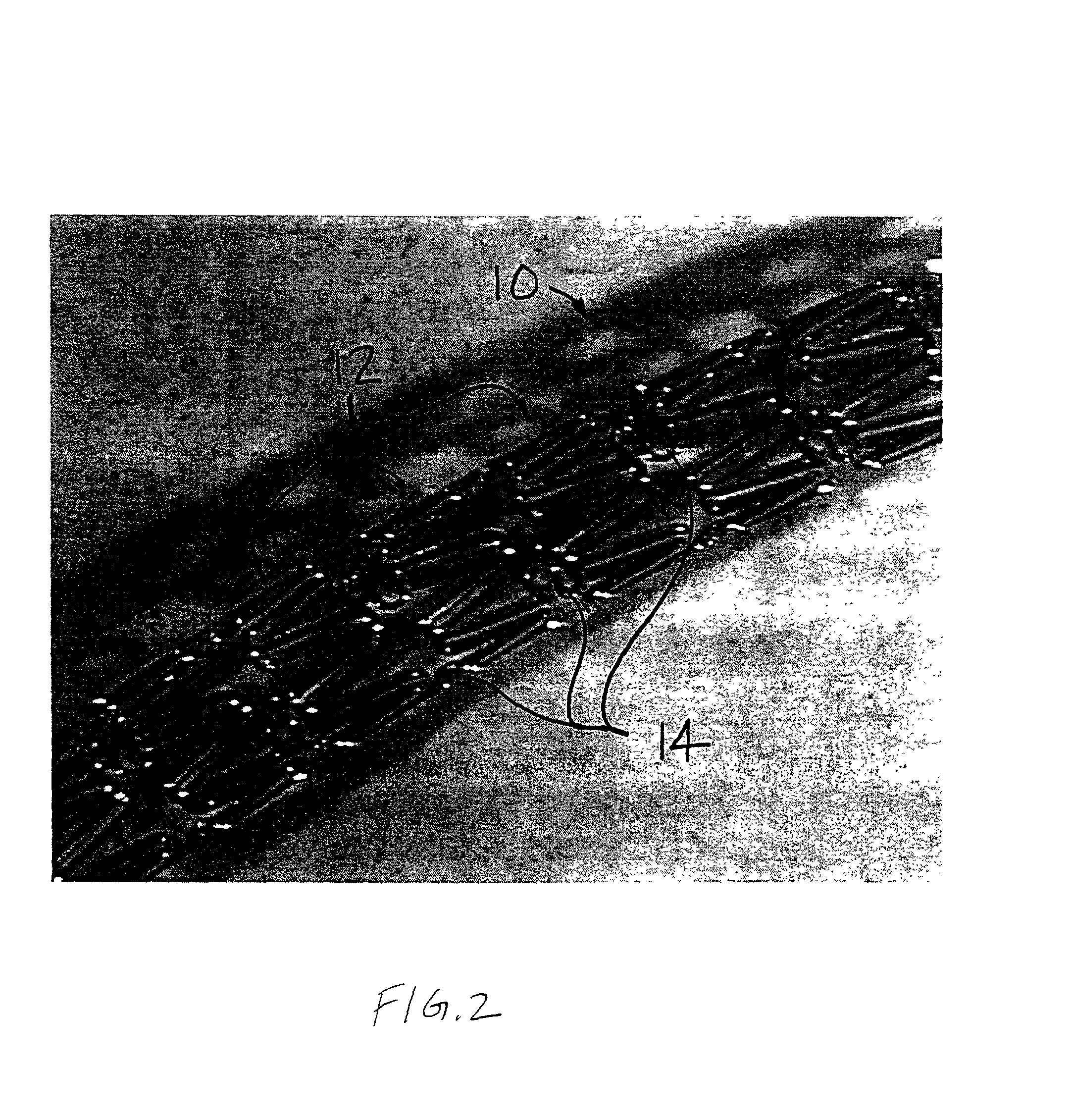[0017] The predetermined
time pattern of the present invention improves the efficiency of
drug delivery by releasing a lower or minimal amount of the substance until a subsequent phase is reached, at which point the release of the substance may be substantially higher. Thus,
time delayed substance release can be programmed to
impact restenosis substantially at the onset of events leading to
smooth muscle cell proliferation (
hyperplasia), The present invention can further minimize substance
washout by timing substance release to occur after at least initial cellularization and / or endothelialization which creates a barrier over the
stent to reduce loss of the substance directly into the bloodstream. Moreover, the predetermined
time pattern may reduce substance loading and / or substance concentration as well as potentially providing minimal to no hindrance to endothelialization of the vessel wall due to the minimization of
drug washout and the increased efficiency of substance release.
[0019] It will be appreciated that the above-described benefits of
time delayed release allow for a wide array of substances to be effectively delivered. The substance may comprise at least one agent selected from the group consisting of immunosuppressant agent, anti-inflammatory agent, anti-proliferative agent, anti-migratory agent, anti-fibrotic agent, anti-thrombotic agent, anti-
platelet agent, and IIb / IIIa agent. Preferably, the agent is an immunosuppressant agent selected from the group consisting of
mycophenolic acid, rapamycin, cyclosporine A,
cycloheximide, cyclophoshamide, mizoribine,
methylprednisolone, azathioprine, ribovirin, FK506, tiazofurin,
methotrexate, zafurin, and
mycophenolate mofetil. The total
amount of substance released will typically be in a range from 1 .mu.g. to 2000 .mu.g., preferably in a range from 10 .mu.g. to 1000 .mu.g., most preferably in a range from 50 .mu.g. to 500 .mu.g. The release rate during the
initial phase will typically be from 0 .mu.g / day to 50 .mu.g / day, usually from 5 .mu.g / day to 30 .mu.g / day. The substance release rate during the subsequent phase will be much higher, typically being in the range from 5 .mu.g / day to 200 .mu.g / day, usually from 10 .mu.g / day to 100 .mu.g / day. Thus, the initial release rate will typically be from 0 % to 99 % of the subsequent release rates, usually from 0% to 90%, preferably from 0% to 75%. Of course, the release rates may vary during either or both of the initial and subsequent release phases. There may also be additional phase(s) for release of the same substance(s) and / or different substance(s).
[0024] Additionally, a
rate limiting barrier may be formed adjacent to the scaffold and / or the matrix. Such
rate limiting barriers may be nonerodible or nondegradable, such as
silicone, polytetrafluorethylene (PTFE), paralene, and parylast, and control the flow rate of release passing through the rate limiting barrier. In such a case, the substance may be released by
diffusion through the rate limiting barrier. Furthermore, a biocompatible or
blood compatible layer, such as
polyethylene glycol (PEG), may be formed over the matrix or rate limiting barrier to make the delivery
prosthesis more biocompatible.
[0028] In a fourth embodiment, the means for releasing the substance comprises a reservoir on or within the scaffold containing the substance and an
external energy source for directing energy at the
prosthesis after implantation to effect release of the substance. A matrix or barrier may be formed adjacent to the reservoir to contain the substance within the reservoir. Alternatively, the means for releasing the substance may comprise a matrix or rate limiting barrier formed over at least a portion of the scaffold, wherein the substance is disposed adjacent or within the matrix or barrier, and an
external energy source for directing energy at the prosthesis after implantation to effect release of the substance. The
external energy source may comprise
ultrasound,
magnetic resonance imaging,
magnetic field,
radio frequency, temperature change, electromagnetic, x-
ray,
radiation, heat, gamma, or
microwave.
Exposure of the prosthesis to an external
energy source may change a
porosity,
diffusion rate, hydrophilicity, or hydrophobicity of the prosthesis, thus allowing release of the substance over the predetermined time pattern.
 Login to View More
Login to View More  Login to View More
Login to View More 


